Energy: Innovations in Practical Work
As part of Science Year in 2002, the Royal Society, supported by the Gatsby Charitable Foundation and Middlesex University, gave away laboratory equipment worth £1 million to UK secondary schools. Included in this scheme were 1500 Energy Transfer Units with an accompanying publication.
| The Energy Transfer Unit booklet introduces a way of talking about energy in terms of stores and transfers. The approach was adapted from that first proposed by Robin Millar in the chapter on 'Energy' in the ASE book 'Teaching Secondary Physics'. The booklet argues that talking about 'forms of energy' is not helpful, merely adding 'verbal ornamentation' to descriptions of changes, rather than developing understanding. | 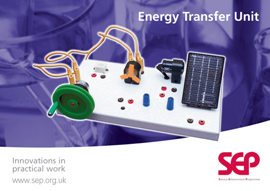 |
Instead, it is more helpful to talk about the different ways that energy can be stored and the ways that it can get transferred from one store to another. This distinction, between ‘energy stores’ and ‘energy transfers’, is not made in the ‘forms of energy’ approach. Talking about stores and transfers offers richer ways in which energy ideas can be developed in the lower secondary school. And because the approach is based more firmly on the principles of traditional thermodynamics, it leads naturally into work in the upper secondary school and beyond.
The Innovations in Practical Work series of booklets and resources, published by the Science Enhancement Programme (SEP), takes this approach as the starting point. The publications aim to provide clear and consistent ways of talking about the storage, transfer, conservation and dissipation of energy.
| Looking at the flow of energy from hot to cold is a good way of introducing students to the idea that energy can be stored and can move from place to place. Thermocolour film is a material that changes colour depending on the temperature, and so it provides a direct and visual way of investigating energy flows. The booklet Hot and Cold: Exploring Temperature Changes using Thermocolour Film has many examples of such activities. Changes involving heating and cooling are critical in developing two key ideas about energy alongside each other - the amount of energy is the same at the start and the end of a change (conservation) and energy tends to spread out and become less 'concentrated' (dissipation). | 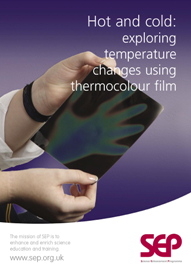 |
| The Energy Now multimedia package includes a sequence of interactive animations that reinforce these ways of thinking and talking about energy changes. It begins with thermal stores and energy transfer by heating, emphasising four key keys ideas about energy - that it is stored, transferred, conserved and dissipated. These ideas are then applied to a broader range of contexts that involve other kinds of energy store (e.g. kinetic, gravitational, chemical) and other ways in which energy can be transferred (e.g. mechanically and electrically). | 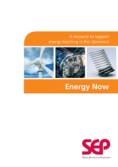 |
| Although learning to talk about energy qualitatively is important, a key idea is that energy is actually a quantitative concept. To give students hands-on experience of measuring energy, SEP developed an innovative energymeter, supported by the booklet Making Energy Real: Using the SEP Energymeter. Like energy, concepts such as force and temperature are also difficult and subtle, but they become familiar to students through using simple instruments (newtonmeters and thermometers) to measure them. In the same way, the energymeter was designed to enable students to become more familiar with energy ideas through simple and direct measurements. The title of the booklet is intended to reflect this sense of 'measuring' as a way of 'making energy real'. | 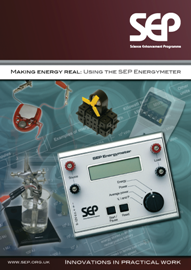 |
| The qualitative and quantitative approaches are brought together in the booklet Energy Storage. It builds on and extends the approach described in the Energy Transfer Unit booklet, looking at different kinds of energy stores and how their behaviour can be explained using the energy concept. It also explores how energy transfers to and from the stores can be measured using the energymeter. As well as linking the practical activities to real-world examples, it also shows how the approach to talking about energy is underpinned by conventional thermodynamics. Although the details of the First and Second Laws of Thermodynamics are beyond school science, it is critical that ways of talking about energy at this level are based on solid science. It is this that ensures that the explanations are consistent and robust. | 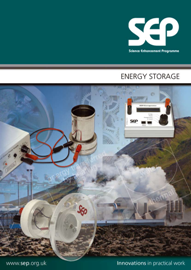 |
| The concept of energy acquires more significance when it is used to solve problems and answer real questions, such as when studying the energy industry. The Wind Power booklet dsescribes a range of practical activities that can be undertaken with a specially designed model wind turbine. Understanding how these devices work involves students in understanding some challenging concepts, such as the relationship between energy and power, the conservation of energy and the efficiency of energy transfers. In addition to the practical activities, there are also computer-based activities involving data analysis and modelling, which look in more detail at the theoretical aspects of wind power. | 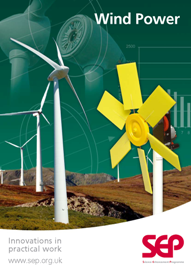 |
| The booklet Solar Power: Electricity from the Sun also contains practical activities that link to real-world examples of renewable energy, and enable students to use their understanding of the energy concept in an interesting and challenging context. The decreasing cost of solar panels means that they have now become an option for domestic installation. Students can explore the factors affecting the output and efficiency of solar panels, and how this affects how they are designed and installed. Again there are computer-based modelling activities that look at the seasonal and geographical variations of solar radiation, and at the economics of solar power in a domestic context. | 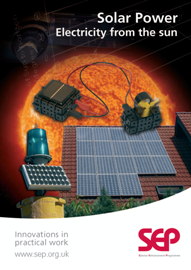 |
A more extended discussion of the story developed in this series of publications can be found in the article Making Sense of Energy in the September 2014 issue of School Science Review.

